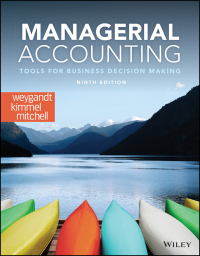






MARS, Inc. (D) In January 2009, Tom Sosa, the purchasing manager, received a telephone call from their Columbus, Indiana, diesel engine supplier informing him that effective June they were no longer producing the D-342 diesel engines at the Columbus plant. The D-342 engine sales were decreasing and would no longer be in their product line. Tom was in shock. He was now forced to deal with the sole supplier of the D-342 located in Portland, Oregon. The most recent price schedule submitted by the Oregon engine supplier is given below: Units per Order Unit Price Less than or equal to 100 ...............$ 4,800 Between 100 and 200.................. 4,700 Greater than 200 . .......... 4,550 The prices had been basically the same as the Columbus supplier except that they are F.O.B. Portland. The traffic department informed Tom that the transportation cost per hundredweight is $10 for carload lots of 50,000 pounds. The less than carload rate is $15 per hundredweight. The replenishment cycle normally takes one week. BACKGROUND Tom Sosa, the supply manager for MARS, Inc. was contemplating several significant changes in the D-342 diesel engine market. Mr. Sosa was concerned because in its production of the 98-D loader, MARS used 10 diesel engines each working day of the month. (MARS operated on a 20- day-per-month schedule.) Each engine weighs 500 pounds. Engine orders are currently placed every Monday morning. For the past 10 years, the D-342 engines had been produced in only two locations in the United States, one in Columbus, Indiana, and the other in Portland, Oregon. Mr. Sosa felt fortunate that the Columbus producer was located approximately 30 miles from his facility. The Columbus supplier offered just-in-time delivery service at no charge to MARS. MARS implemented lean manufacturing in 2002. The kanban-controlled JIT production system was implemented based on the premise of minimizing work-in-process inventories (waste) by reducing lot sizes in order to increase production efficiency and product quality. ACTION TAKEN BY TOM Mr. Sosa compiled cost and warehouse capacity data on the D-342 engine from the accounting department. See Table C17.1. Mr. Sosa wonders what effects these new developments will have on his cost structure. TABLE C17.1 Cost and Warehouse Capacity Cost of unloading engines into warehouse .........$0.25 (per 100/wt) Order processing cost per requisition .............$100 Warehouse capacity ........ ...200 units Outside warehouse costs ........ $39 per year per unit* Expediting cost per requisition ......... Inventory carrying cost ........................38% .....$50 *There is existing space in the warehouse for 200 units. Additional space must be leased for a year. If an order is more than 200 units, part of the order must be stored in leased space. What were MARS's total costs per year prior to the new price structure when the diesel engine price was $4,800? Was MARS using the EOQ method? With volume discounts and warehouse constraints, what is the best ordering quantity? With purchase discounts and different rates, how are costs and EOQs affected? How will these changes impact the lean manufacturing philosophy at MARS? Determine the cost impact of using the Portland supplier. How will the change in supplier for the D-342 diesel engine affect sales for the 98-D loader













